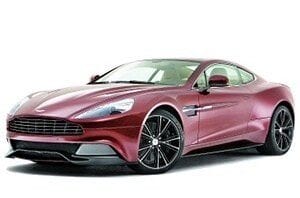
Honda: We work on cells 10 times better than lithium-ion • ELECTROMAGNETICS – www.elektrowoz.pl
Researchers at Honda, CalTech and the Jet Propulsion Laboratory in California have published a paper on new fluoride-ion (F-ion) cells. They say they can reach energy densities up to ten times that of lithium-ion cells. This would mean that the distance between electric vehicles would reach hundreds of kilometers from a battery weighing only a few kilograms!
Table of contents
- Will F-ion cells replace lithium-ion cells and inhibit the development of Li-S?
- F-ion = energy density of kerosene, therefore not much inferior to gasoline
Fluoro-ionic elements have been studied for some time, but the greatest success so far has been getting them to work at temperatures of 150 degrees Celsius or higher. Below this temperature, the ions refused to pass through the solid electrolyte. Now the situation is changing (source).
> Bus lane ticket? Don't accept! – tense MEETING WITH THE POLICE [360° video]
Scientists say they have created liquid electrolytes based on certain salts that make the cell work, that is, allow it to charge and release energy at room temperature. The cathode is a nanostructure of copper, lanthanum and fluorine, which must resist the growth of dendrites that damage lithium-ion cells.
F-ion = energy density of kerosene, therefore not much inferior to gasoline
According to researchers Fluoro-ion cells will be able to achieve energy densities up to 10 times higher than lithium-ion cells.... The best lithium-ion cells today are around 0,25 kWh / kg, but it is said that with solid electrolytes we will reach around 1,2 kWh / kg. “Up to 10 times more” means “up to 12 kWh / kg” for the F-ion. This is a colossal value, close to the specific energy of kerosene (kerosene) and not much worse than that of gasoline.!
The most economical electric vehicles in the world need a little more energy to travel 100 kilometers:
> The most economical electric vehicles according to the EPA: 1) Hyundai Ioniq Electric, 2) Tesla Model 3, 3) Chevrolet Bolt.
So 7-10 kilograms of F-ion elements should be enough to achieve a range of 500 kilometers. Even taking into account the weight of the BMS and the body, we could travel several hundred kilometers if only a few tens of kilograms of batteries were stuck somewhere under the hood or seat.
To this set we add the fact that cells with F-ions use elements that are more readily available than lithium and cobalt, and the extraction of which is much less harmful to the environment. Ideally? Yes, if you can make real elements from it that can withstand at least 800-1 charge-discharge cycles and, after a collision, do not emit energy in the form of a fireball ...
> The European project LISA is about to start. The main goal: to create lithium-sulfur cells with a density of 0,6 kWh / kg.
In the photo: Honda Clarity Electric, illustrative image (c) Honda
This may interest you:
